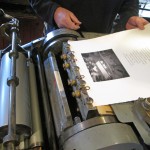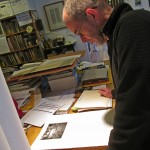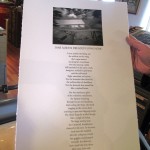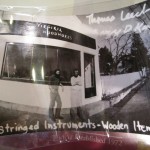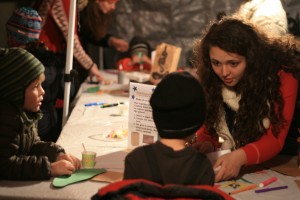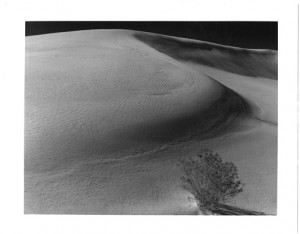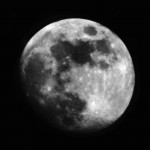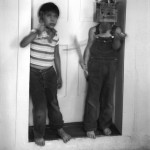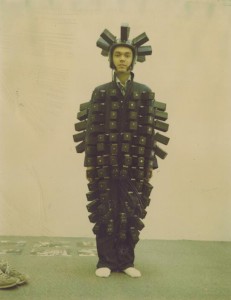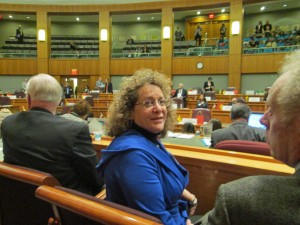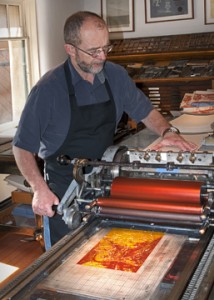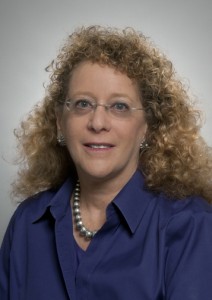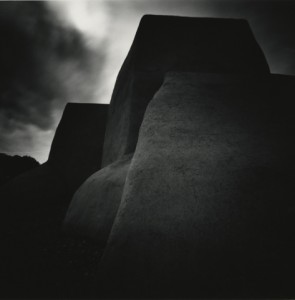Opening April 27, the exhibit Poetics of Light: Pinhole Photography took its name from the way light becomes an object of play when set between an object and a pinhole camera. The photos produced take what we think we know of the world and turn it upside-down, backward and more.
It seemed only natural to reach out to Santa Fe Poet Laureate Jon Davis to help us with events during the exhibition’s run. He agreed (see list of events at bottom), but went one better. Using Gregg D. Kemp‘s pinhole photograph, Jane Always Dreaded Flying Home, as his inspiration, Davis wrote a poem that the Palace Press is turning into a broadside.
Director Tom Leech decided to try a new technique, having Kemp’s photograph digitally printed on the paper, then applying Davis’ poem via traditional letterpress. “I’ve never seen this done before,” he said.
Here’s Leech feeding it into the press to apply the poem’s headline:
Studying the typography:
And holding the almost-finished product:
The broadside will be released on the exhibition’s opening day. Copies will sell for around $75.
For Leech, the project held a coincidental quirk: In 1974, he and Kemp owned Virginia Woodworks in Colorado Springs, where they made Appalachian dulcimers. The business didn’t last, but this photography (fittingly, a pinhole image) of the two of them way-back-when survived:
Poetics of Light: Pinhole Photography events with Santa Fe Poet Laureate Jon Davis:
Friday, May 30, 6 pm, “Santa Fe Poets 5,” the fifth of six group poetry readings Davis is organizing as part of his tenure. Joining him in the History Museum Auditorium will be Chee Brossy, Joan Logghe, Carol Moldaw, Henry Shukman, and Farren Stanley. Free.
Sunday, June 1, 1 – 4 pm, “The Poetry of Light,” a writing workshop building on inspiration from Poetics of Light images. Open to high schoolers and older, the event is free, but reservations are recommended. Call 476-5096.

